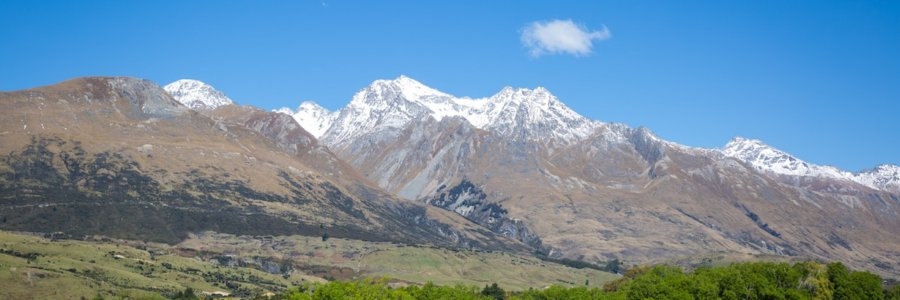Capturing the Magic of Otago: Tips and Tricks for Landscape Photography

Introduction
Otago, located in the southern part of New Zealand's South Island, is known for its stunning landscapes and natural beauty. With its mountain ranges, blue lakes, and rugged coastline, it's no wonder that photographers from all over the world come here to capture the magic of this region.
Whether you're a professional photographer or an amateur with a passion for photography, you'll find plenty of inspiration in Otago. In this article, we'll share some tips and tricks to help you capture the best shots of this stunning region.
Gear
Before we dive into the tips, let's talk about gear. While you don't need to have the latest and greatest equipment to take great photos, having some essential gear can make a big difference.
First and foremost, you'll need a camera with manual controls. Whether you prefer a DSLR or a mirrorless camera, make sure it has the ability to adjust the shutter speed, aperture, and ISO.
You'll also need a sturdy tripod to keep your camera steady, especially when shooting in low light conditions. A polarizing filter can help reduce glare and enhance the colors in your photos, while a graduated neutral density filter can help balance the exposure between the sky and the land.
Timing
One of the most important factors in landscape photography is timing. The quality of light can make or break a photo, so it's important to plan your shoot around the best light conditions.
In Otago, the best light for landscape photography is often in the early morning or late afternoon. This is when the sun is low in the sky and creates long shadows and warm, golden light.
If you're shooting during the day, try to avoid shooting in the harsh midday sun. Instead, look for interesting subjects that are backlit or in the shade. Cloudy or overcast days can also provide soft, diffused light that is great for capturing moody and atmospheric images.
Composition
Composition is another key element in landscape photography. It's how you arrange the elements in your photo to create a visually pleasing image.
When composing your shot, try to follow the rule of thirds. Imagine dividing your frame into thirds both horizontally and vertically, and place your subject at one of the intersections. This creates a more visually interesting composition than placing your subject in the center of the frame.
You can also use leading lines to draw the viewer's eye into the photo. This can be a road, a river, or even a fence line. Just make sure the leading line leads somewhere interesting in the frame.
Don't be afraid to experiment with different perspectives, such as shooting from a low angle or a high vantage point. This can create a sense of depth and give your photos a unique perspective.
Weather
Weather can play a big role in landscape photography, especially in Otago where the weather can be unpredictable. While you might be tempted to pack it in when the weather turns sour, don't be afraid to embrace the elements.
Rain, fog, and snow can add mood and atmosphere to your photos. Just make sure to protect your gear with a rain cover and dry it off after your shoot.
If you're lucky enough to be in Otago during a storm, try to capture the drama and intensity of the weather. Look for interesting cloud formations or lightning strikes, but be safe and don't put yourself or your gear in danger.
Locations
Otago is blessed with many stunning locations for landscape photography. From rugged coastlines to snow-capped peaks, there's no shortage of beautiful scenery to capture.
One of the most popular locations for landscape photography in Otago is Lake Wanaka. With its clear blue waters and picturesque tree, it's a favorite spot for photographers from around the world.
Another popular location is Milford Sound, a dramatic fiord that's surrounded by steep cliffs and waterfalls. The best way to capture the beauty of Milford Sound is by taking a boat tour, where you can get up close and personal with the scenery.
If you're looking for something off the beaten path, consider visiting the Catlins. This rugged and wild part of Otago is home to stunning waterfalls, hidden beaches, and unique rock formations.
Tips and Tricks - Use a wide-angle lens to capture the vastness of the landscape.
- Look for interesting foreground elements, such as rocks or flowers, to add depth to your photos.
- Try shooting in black and white for a more moody and dramatic effect.
- Experiment with long exposures to capture movement in the water or clouds.
- Use a remote shutter release or the self-timer function to avoid camera shake.
- When shooting at night, use a tripod and a high ISO to capture the stars.
- Don't be afraid to make mistakes and experiment with different techniques.
Conclusion
Otago is a photographer's paradise, with its stunning landscapes and varied weather conditions. Whether you're a professional photographer or an amateur with a passion for photography, you'll find plenty of opportunities to capture the magic of this region.
By following these tips and tricks, you'll be well on your way to creating stunning photos that capture the beauty and majesty of Otago. So grab your gear, head out into the wild, and start capturing the magic of this incredible region.
|
|






